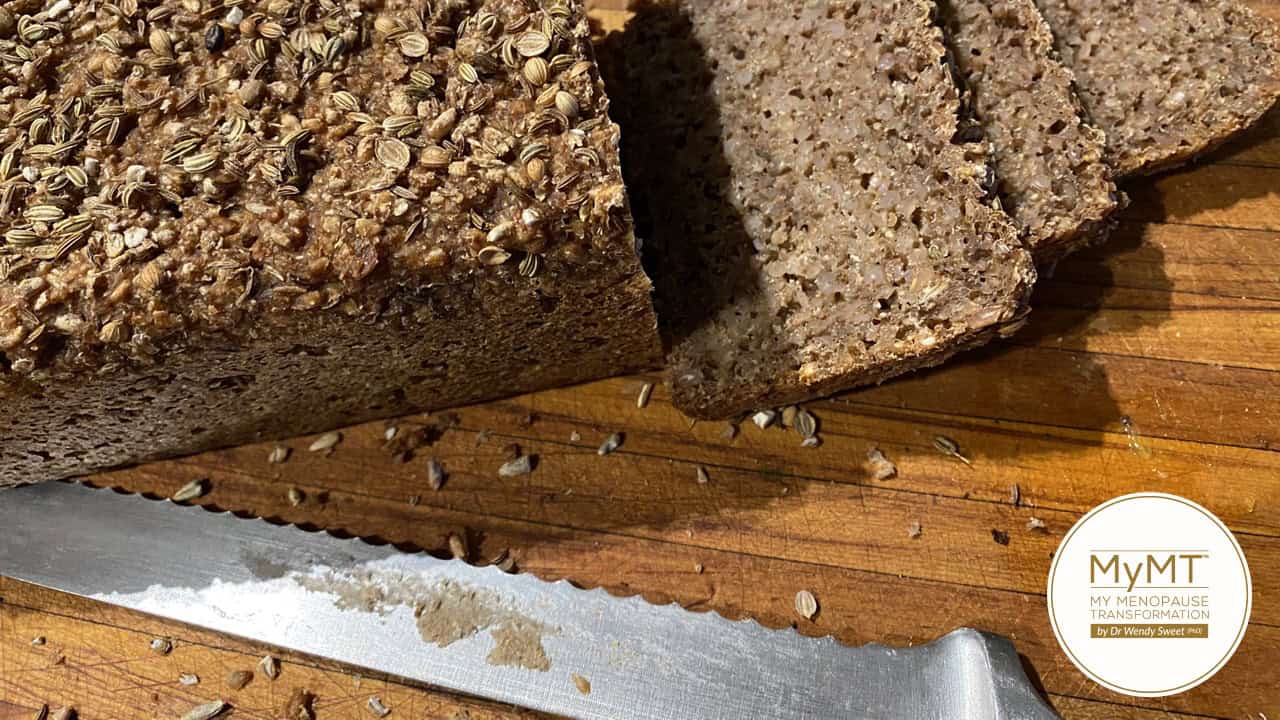“After this past year of avoiding whole-grains completely based on the diet I was on, I now realise that this was the wrong thing to do now that I’m in my 50’s. I’ve lost 5 lbs & I’m feeling amazing. I have so much more energy.” [Kirsten, USA]
Most women joining me on the MyMT™ programmes are surprised that I give them permission to eat bread … but not just any bread. My recommendation is rye bread and there’s a reason for this.
One of the most important discoveries of the past few years, has been that the immune system and inflammatory processes are involved in, not just a few select disorders, but a wide variety of mental and physical health problems which persist across the lifespan (Furman, Campisis et al, 2019). For women entering menopause (peri-menopause) and moving through to post-menopause, this is relevant information.
Hot flushes are now known to be an early indicator of inflammatory changes occurring in the hypothalamus region of the brain and around the body. As women move through menopause, inflammatory changes may also occur in the gut, the cardiovascular system and the liver, as these organs learn to adapt to the decline of oestrogen.
Because of these inflammatory changes, our diet matters more than ever as we move through menopause and into our post-menopause years. This is where wholegrains come in, rather than heavily refined grains and when it comes to bread for your sandwiches, the type of bread matters too.
Whole grains represent the earliest forms in which humans consumed cereals. Eaten boiled or roughly pounded to a flour, mixed with water and roasted, they were a form of slow-release carbohydrate with a low blood sugar response. They were also filling and sustaining.
So, whether your hot flushes are still bothering you or not, or your gut and heart health have changed, or you are putting on weight, and no matter what medications and supplements you may be on, then please take note – regulating your blood glucose levels and improving your fibre intake are important lifestyle changes you can make.
Whole-grains, especially rye bread, helps you to achieve this.
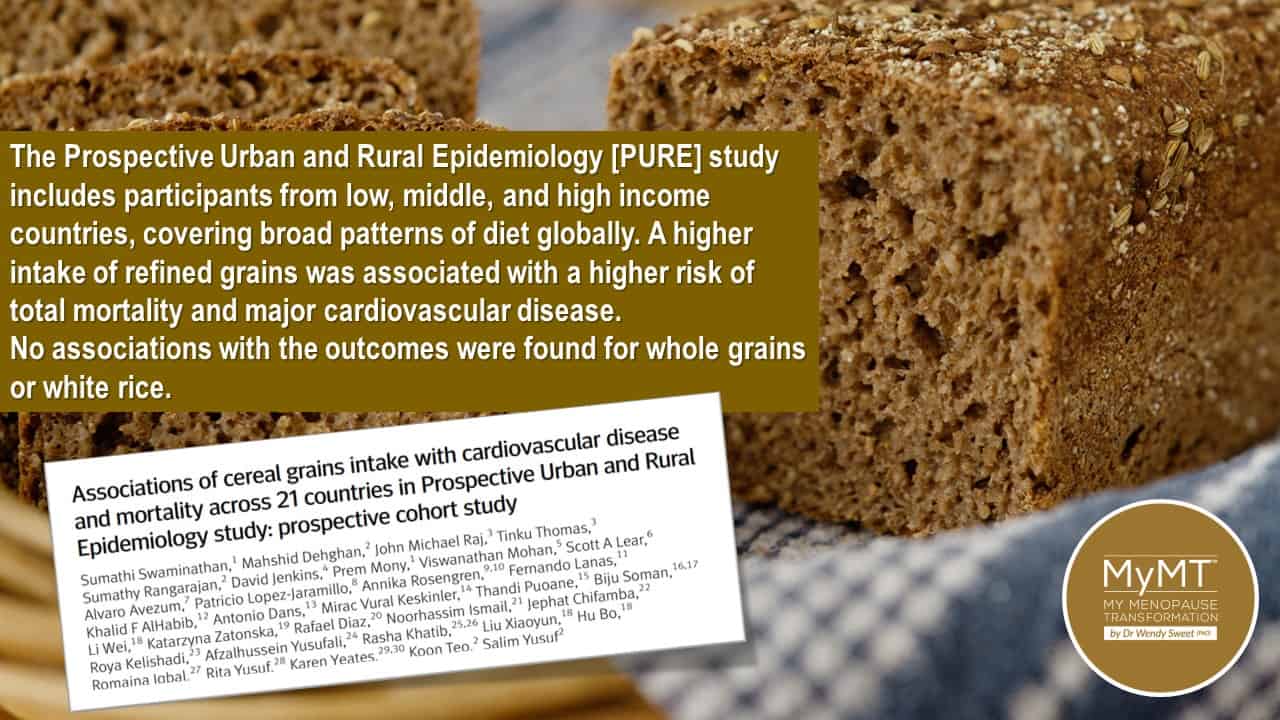
The ‘no-grains, no-carbs’ brigade got me for a while too. Caught up in the weight-loss and dieting confusion as my weight, bloating, hot flushes and joint pain became worse, I thought that having whole-grains in the form of starch was part of the problem – it seemed to be that everyone at the gym was promoting ‘no-grains’ – low carb, high fat and high protein diets were the next ‘thing’ when it came to the nutritional messages endorsed by fitness enthusiasts and popular diets.
I thought that everyone promoting these diets were right. But in an ageing body going through menopause, I realised that a diet designed for body-builders and younger athletes is not designed for women going through menopause. I felt exhausted.
Now after years of following, the women’s healthy ageing and cardiac-health research, I’ve turned my back on the ‘no-grainers’. This is because of the ever-growing scientific evidence on the importance of whole-grains in a heart-healthy and diabetes-friendly diet. For women who continue to exercise, it’s never been more important to help your heart to restore the energy it needs.
Post-menopause heart disease is the burden of many Western countries around the world. Women’s CVD risk significantly increases after they shift into menopause, which is not just related to ageing but also, at least in part, to the decline in ovarian hormone concentrations during the menopausal transition and beyond. (American Heart Foundation, 2017).
Oestrogen plays a role in the contraction of the heart as well as the dilation of our coronary blood vessels. This means that the reduction in oestrogen as part of our normal menopause transition has a less than beneficial effect on the size and function of our heart. This includes increased thickness of the heart wall, vascular stiffening, slower recovery (especially after endurance exercise), and changes to the nerve signaling. [Strait, J. et al. (2012)].
New Zealand, Australia, America and the United Kingdom have the highest incidence of post-menopause heart disease. As modernisation hits China, post-menopause heart disease is growing in prevalence there too.
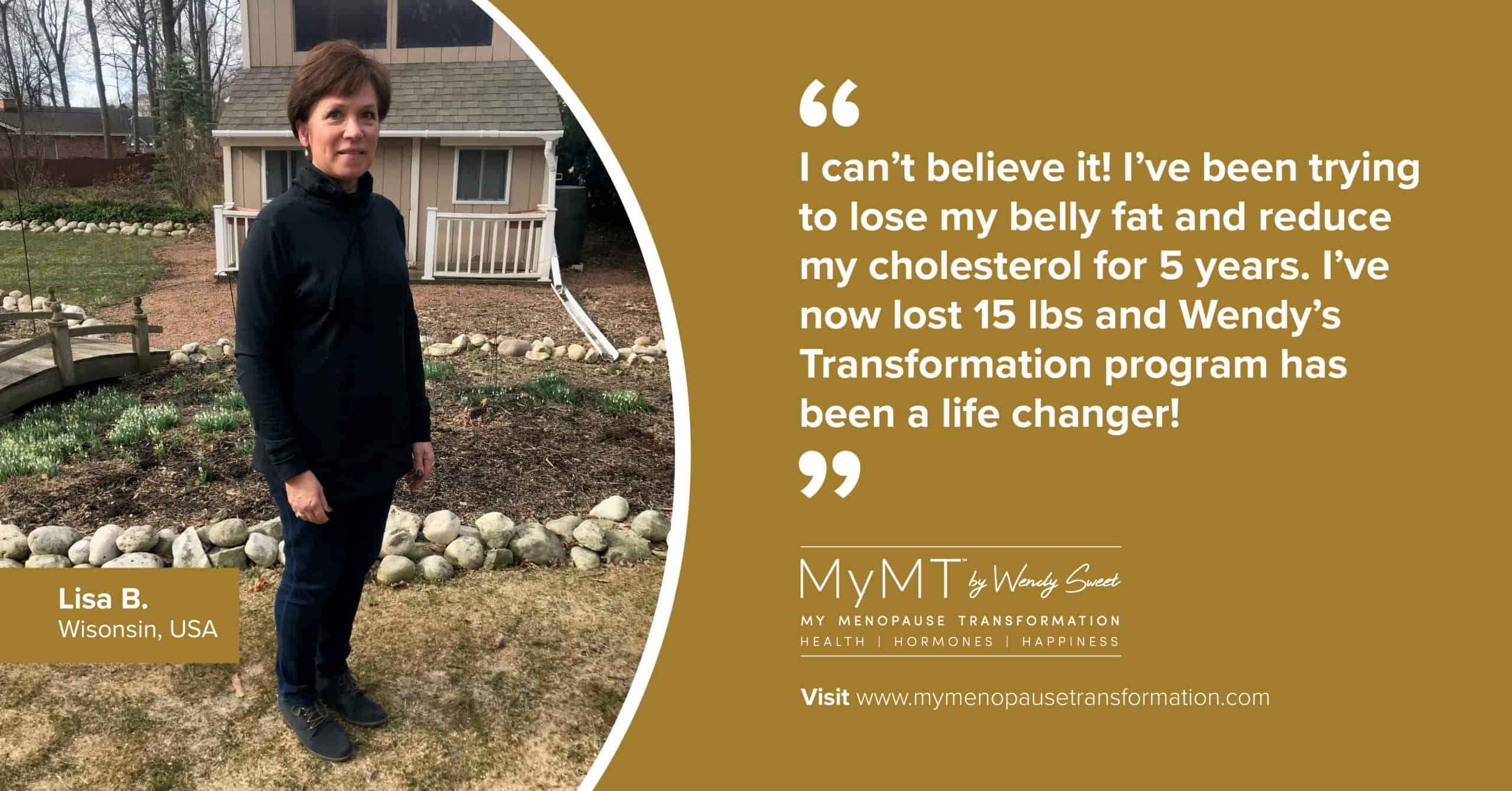
Diet is one of the most important environmental factors affecting the risk of developing heart disease in later life and for women moving through menopause, there remains a lot of confusion about which diet is ‘best’. I used to be confused as well. That’s why following the science is importance, as well as positioning our menopause transition in women’s heart health and ageing evidence.
Whole grains constitute a major source of energy and for women who are moving through menopause, the relationship between whole-grains intake, gut health, cardiovascular health and regulation of blood glucose, is an important one.
Intact whole-grains are unrefined. This means that they remain unprocessed and close to how they are found in nature. Oats, barley and brown rice are the most common and in many Scandinavian countries as well as Europe, rye is common too.
What I like about whole-grains apart from their fibre and heart-health benefits, is that for women in menopause, they are also full of natural minerals and nutrients that our brain, gut and heart needs.
This is where Rye comes in. It is a particularly rich source of dietary fibre and has been consistently associated with lowered risk of developing Tye 2 diabetes, cardiovascular disease and some cancers. (Jonsson, Andersson et al, 2018). How this happens continues to be under some debate, but several studies have shown that the high content of dietary fibre combined with important bio-active compounds in rye is the main driver of the health effects of this important wholegrain.
Rye is rich in phyto-chemicals compared to other grains.
I’ve talked about these nutritional chemicals before. They are plant-made compounds that have functions in the plant such as cellular signalling and protection. In cereals, the majority of the phytochemicals are found in the bran but the curious thing about rye is that the list of phytochemicals detected is continually increasing – so the density of bioactive compounds in rye is high compared to other grains. (Jonssen, Andersson et al, 2018).
These compounds have health benefits for women during and post-menopause and epidemiological evidence, suggests that these plant-based compounds help to protect us from various diseases when consumed regularly as part of the habitual diet.
With regard to rye for women in menopause, these healthful compounds incude:
- Beta-glucans, which help to improve liver clearance of cholesterol
- Betaine, which helps to improve cardiovascular function
- Lignans, which are converted by the gut microbiota to phyto-oestrogens (enterodiol and enterolactone).
But perhaps the most important aspect of adding rye to your diet, (if you don’t have coeliac disease), is that it contains high amounts of dietary fibre. The high content of dietary fibre in rye, compared to wheat, is regarded as one of the main drivers of the health effects this food has on the human gut microbiome.
As such, research suggests that rye breads, in comparison to wheat-based products, reduce the demand for insulin production. This is important for women moving through menopause, as problems with blood sugar regulation are know to affect temperature control, sleep, higher cortisol production and weight gain. [Gibson, Thurston & Matthews, 2016].; Jonsson, Andersson et al, 2018].
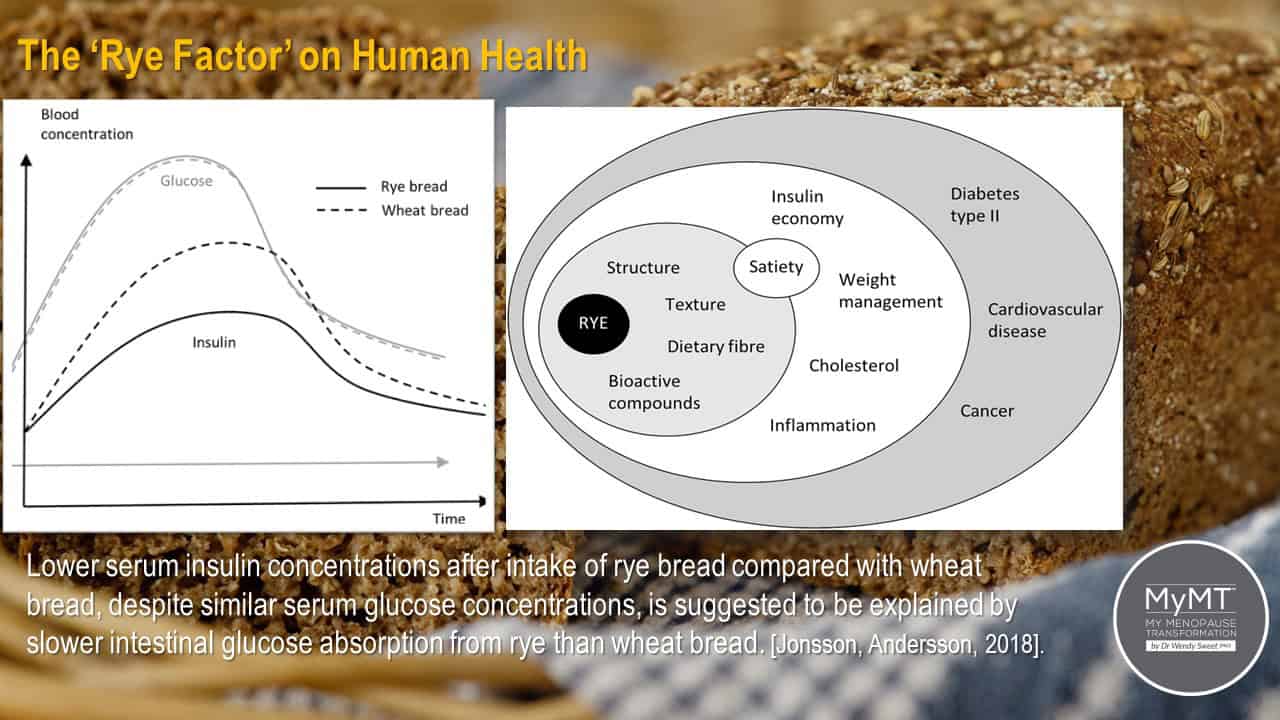
To protect our heart, stabilise our blood sugar, reduce hot flushes (which become worse when blood pressure is high), we need the help of whole-grains. Cardiac health research suggests 2-3 serves a day. In the MyMT™ Food Guide, I get women focusing on brown rice, oats and of course, rye bread to start with, especially if they are exercising as these wholegrains give us energy and help to replace important carbohydrates in muscle.
All of these grains are part of a heart-healthy diet.
Higher whole-grain and bran intakes are consistently associated with a 16-30% lower risk of cardiovascular and coronary heart disease in observational studies (Evidence Report, NZHF, 2018). When up to three serves per day are consumed, cardio-protection is greater.
But there’s more to this story too – the quality of the carbohydrate is most important in women’s heart health and that’s where whole-grains come in. Oats and barley have a greater beneficial effect on total and LDL cholesterol (3-8% reduction), especially in people with raised lipid (fat) levels, due to their soluble fibre content.
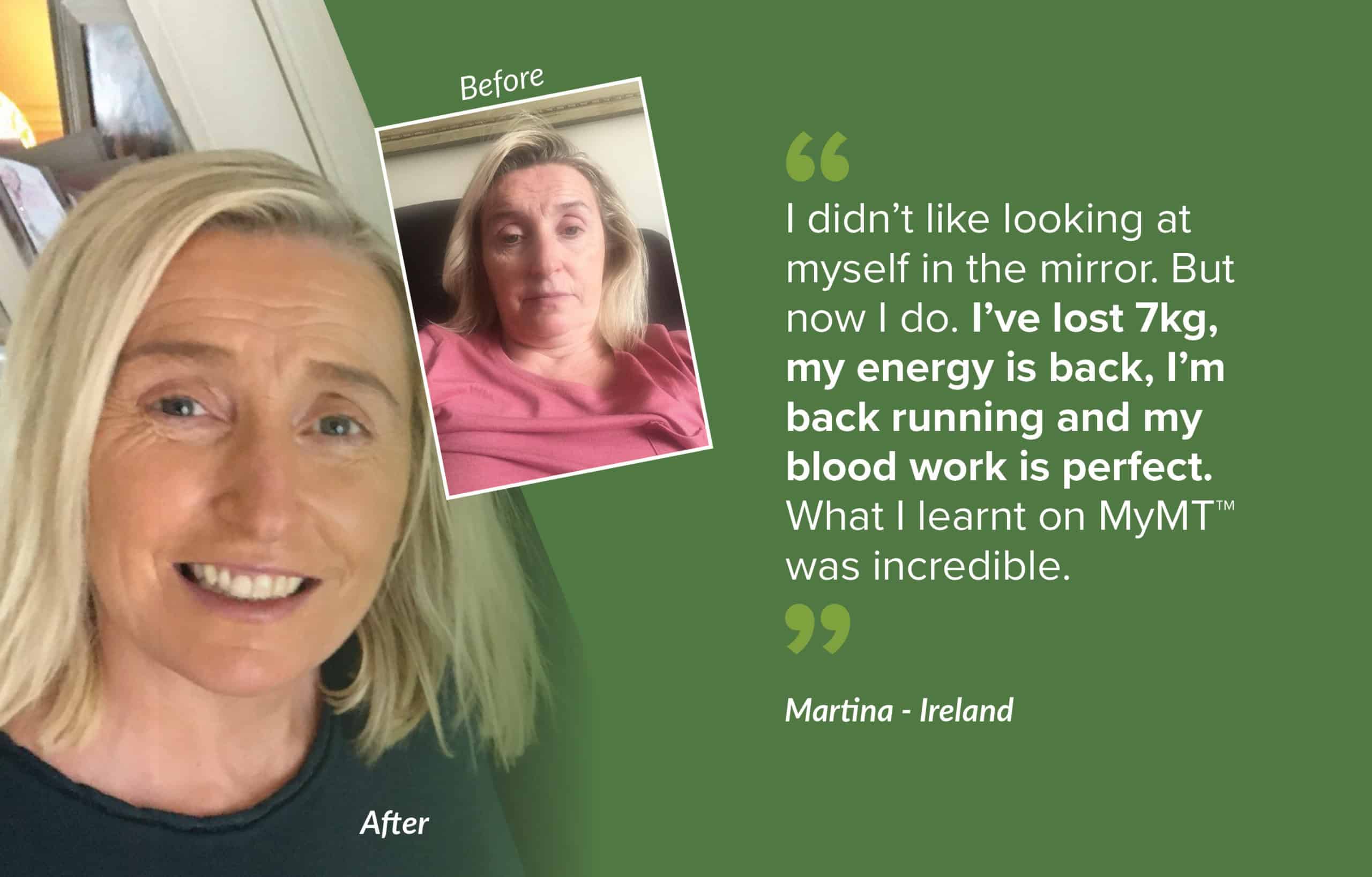
The past 20 years has seen an increased rise in low carbohydrate, especially in and around the fitness and weight loss industries.
But what’s missing from the conversations is the differentiation between all the different types of carbohydrates. For example, choosing whole grain and high-fibre foods is very different from choosing processed, refined grains and products with added sugars. Examples of refined grains are white bread, pasta, crackers and many man-made cereals.
The confusing thing for many people however, is that all these types of foods are labelled as ‘carbohydrates’. But when it comes to our health, they differ enormously. In New Zealand for example, we get most of our whole grains from bread and breakfast cereals but these can have added sugar, salt and saturated fats. That’s why if we can choose organic, simple wholegrains that are as close to the original grain, the better for our health as we age.
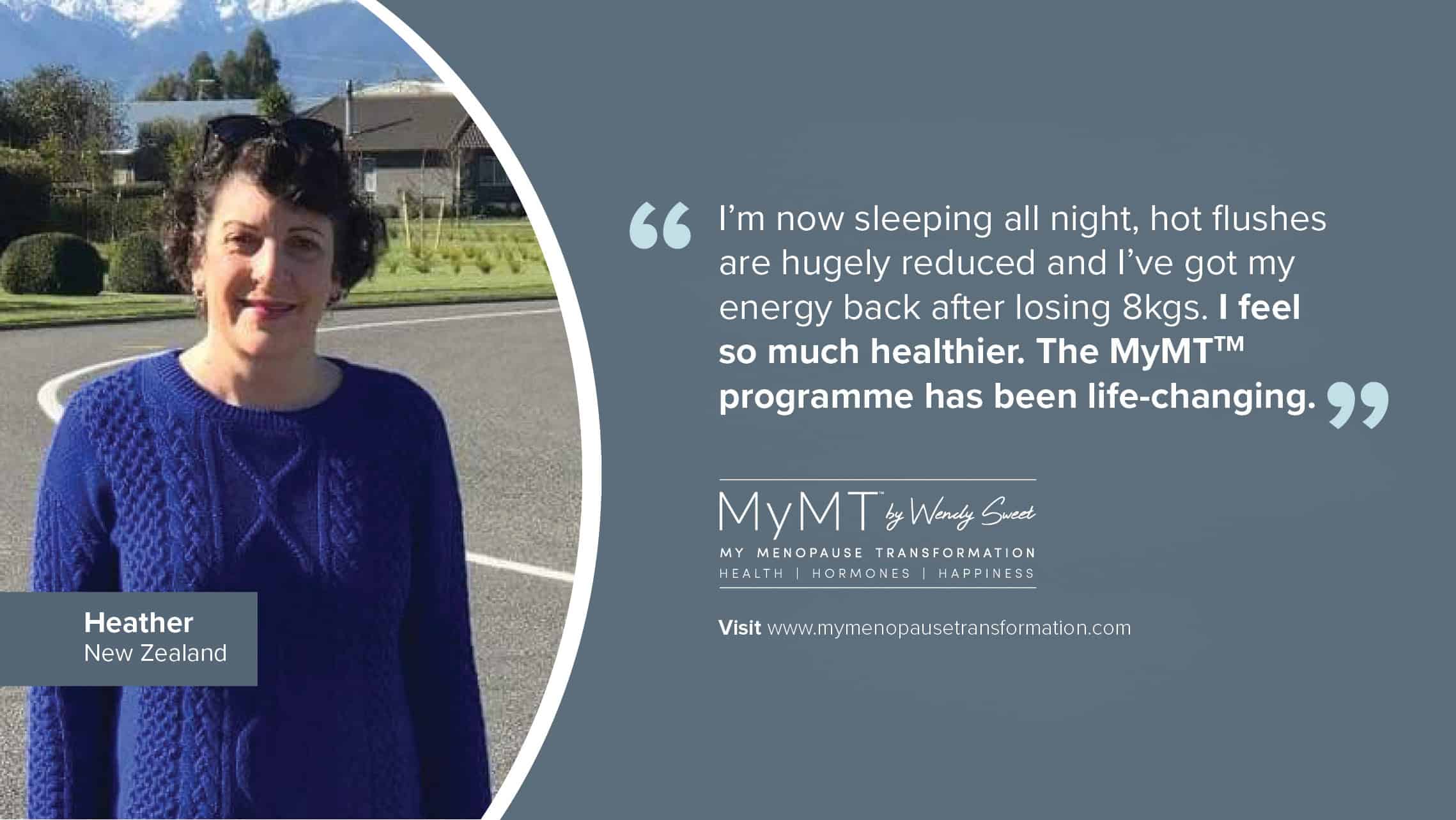
Never before have we become so confused about our food. And yes, despite lecturing in sport and exercise nutrition, I had become that way too. That’s why in both of the MyMT™ programmes I have based all the nutrition advice ‘just’ for us in menopause. There are too many ‘one-size-fits-all’ approaches out there and many are not evidenced for women as they transition menopause. These programmes are also heart-healthy.
Our mother’s generation has seen so much heart disease and many of our generation are now looking after and caring for women who are on a range of pills for cardio-vascular disease. We can’t make the same mistake and have to rely on medicines to get through our post-menopause years.
My passion is for women to start putting their menopause transition into ‘wellness’, not ‘sickness’ and it’s why I follow the scientific evidence for women’s healthy ageing.
My 12 week online programmes, teach you how to transition into your post-menopause years, understanding better how to look after yourself. These programmes continue with a NZ$50 savings for you as I know many of you are challenged financially with the changes to your life from the pandemic. Please use the promo code ATHOME22 to access your savings. Monthly payments are also available for the 3 months.
For those of you, who may be interested to hear from me, I also have a short video for you below – if you’ve wondered why your gut health may be changing as you move through menopause, have a listen when you can.
Dr Wendy Sweet, [PhD/ MyMT™ Founder & Member: Australasian Society of Lifestyle Medicine]
References:
Babiker, F., De Windt, L., et al. (2002). Estrogenic hormone action in the heart: regulatory network and function. Cardiovascular Research 53, 709-719.
European Union Healthgrain Forum. Online: https://healthgrain.org/whole-grain/
Furman D., Campisi J., Verdin E., Carrera-Bastos P., … Slavich GM. (2019). Chronic inflammation in the etiology of disease across the life span. Nat Med. Dec;25(12):1822-1832. doi: 10.1038/s41591-019-0675-0.
Gorton, D. (2018). Evidence Paper: Wholegrains and the Heart. Wellington: NZ Heart Foundation.
Jonsson, K., Andersson, R., Knudsen, E., Hallmans, G. …. Landberg, R. (2018). Rye and health – Where do we stand and where do we go? Trends in Food Science & Technology, 79, 78-87. ISSN 0924-2244
Jull, J., Stacy, D. et al. (2014). Lifestyle interventions targeting body weight changes during the menopause transition: A Systematic Review. Journal of Obesity. Article ID 824310, 1-16.
Mann, J. & Truswell, S. (2007) 3rd Ed. Essentials of Human Nutrition. Oxford University Press: Oxford, UK
Moazzami A., Bondia-Pons I., Hanhineva K., Juntunen K., Antl N., Poutanen K., & Mykkänen H. (2012). Metabolomics reveals the metabolic shifts following an intervention with rye bread in postmenopausal women–a randomized control trial. Nutr J.,11:88. doi: 10.1186/1475-2891-11-88.
Sandberg JC, Björck IM, Nilsson AC. (2016). Rye-based evening meals favorably affected glucose regulation and appetite variables at the following breakfast; A randomized controlled study in healthy subjects. (2016). PLoS One. Mar 18;11(3):e0151985. doi: 10.1371/journal.pone.0151985.
Stice, J., Lee, J. et al. (2009). Estrogen, aging and the cardiovascular system. Future Cardiol. 5(1): 93–103.
Swaminathan S, Dehghan M, Raj JM, Thomas T., Rangarajan S, Jenkins D, Mony P, Mohan V, Lear SA, Avezum A, Lopez-Jaramillo P, Rosengren A, Lanas F, AlHabib KF, Dans A, Keskinler MV, Puoane T, Soman B, Wei L, Zatonska K, Diaz R, Ismail N, Chifamba J, Kelishadi R, Yusufali A, Khatib R, Xiaoyun L, Bo H, Iqbal R, Yusuf R, Yeates K, Teo K, Yusuf S. (2021). Associations of cereal grains intake with cardiovascular disease and mortality across 21 countries in Prospective Urban and Rural Epidemiology study: prospective cohort study. BMJ. Feb 3;372:m4948. doi: 10.1136/bmj.m4948.
